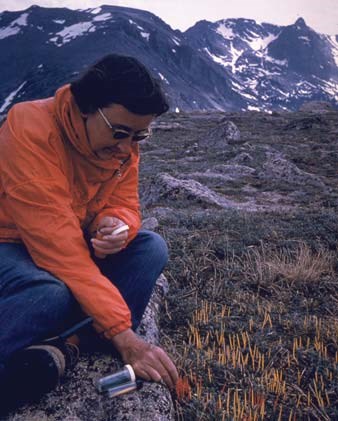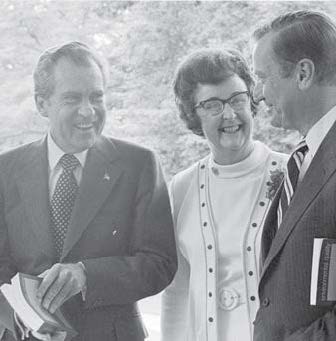Last updated: October 28, 2022
Article
Dr. Willard’s Alpine Tundra Research Plots

Dr. Beatrice Willard (1925-2003) was a beloved and respected tundra ecologist. In 1959 she established research exclosures (fences used to keep something out of an area) in Rocky Mountain National Park along Trail Ridge Road at two locations: Rock Cut and Forest Canyon Overlook. Both areas showed great signs of human impact, including vegetation destruction, lichen removed from rocks, and paths worn into sensitive tundra soils. At these plots Dr. Willard examined the "complexity of dynamic processes set in motion by visitor impact" by collecting data on the plant species, the vitality and general physical condition of plants, which plants moved into open areas, and noting ecosystem processes, such as frost action and erosion. She monitored the plots for approximately 40 years.
From the research Dr. Willard conducted, she published her dissertation and subsequent scientific journal articles about alpine tundra recovery after human trampling, which have been cited extensively by scientists. In 1972, Dr. Willard co-authored the seminal book on alpine tundra: The Land Above the Trees. At Rocky Mountain National Park, Dr. Willard influenced how the park manages its alpine tundra by implementing several of Dr. Willard’s recommendations from her 40 years of research.
Dr. Willard’s work at the plots and the subsequent influence she had over national environmental policy is of great importance to our nation’s history. According to ecologist David Cooper, the plots “represent one of the influence U.S. efforts incorporating science into long-term land management and planning. These are among the oldest study plots in alpine tundra or mountain environments in the world.” They are most likely the oldest permanent alpine tundra plots in the National Park System and have demonstrated the need for careful management of alpine tundra.

In 2007, the National Register of Historic Places designated Dr. Willard’s plots at Rock Cut and Forest Canyon as Historic Places. These two plots are places of significance because of their affiliation with Dr. Willard and represent Dr. Willard’s life work as a tundra ecologist and fostered her role as an ecologist, educator, and negotiator.
In addition to the research Dr. Willard conducted, she was a pioneer for women in science. Dr. Willard was an important Colorado environmental leader, directing the Thorn Institute near Aspen, counseling Colorado governors, establishing the Colorado School of Mines environmental sciences program, where she was the first woman to chair a department at Mines. In addition, Dr. Willard took an active role in protecting Florissant Fossil Beds National Monument and convincing Bill Coors to create a recyclable aluminum can. She influenced federal environmental policy as well, working to get the oil and mining industries and environmentalists to work together. Dr. Willard was a key advisor to Presidents Nixon and Ford, the first woman to serve on the President’s Council for Environmental Quality (Thorne). During her tenure at the White House, she consulted on the design and installation of the Alaska Pipeline. Historian Janet Robertson notes Dr. Willard’s "studies of how people affect tundra, conducted on Trail Ridge Road in Rocky Mountain National Park, have influenced the administration of public lands throughout the country. This remarkable woman...was a writer, a teacher, a researcher, a superb organizer, and a catalyst for sweeping national and international changes."
References
B.E. Willard and J.W. Marr, "Effects of human activities on alpine tundra ecosystems in Rocky Mountain National Park, Colorado," Biological Conservation vol. 2, no. 4 (July 1970): 257-265; John W. Marr and Beatrice E. Willard, "Report on Research from 1 May 1959 to 1 May 1960 on Contract NPS #2 between the Park and the University," University of Colorado, Institute of Arctic and Alpine Research, June 1960.
David Cooper, Colorado State University, to Jeff Connor, Bill Butler, and Terry Terrell of the National Park Service via email, 9 Jan 2003, on file RMNP.
Janet Robertson, The Magnificent Mountain Women: Adventures in the Colorado Rockies (Lincoln: University of Nebraska Press, 1990), 180.
Yost, Cheri; Davies, Chase (June 2007). "National Register of Historic Places Registration Form: Willard, Beatrice, Alpine Tundra Research Plots" (PDF). National Park Service. Retrieved 16 September 2021.
